

James Forbes (1 October 1797, Peterhead, Scotland - 25 March 1881, Plainwell, Michigan) was a Scottish portrait painter who later moved and worked in the United States.


James Forbes (1 October 1797, Peterhead, Scotland - 25 March 1881, Plainwell, Michigan) was a Scottish portrait painter who later moved and worked in the United States.

His artistic education is not a matter of record. He originally worked in Aberdeen, where he was also an art teacher. John Phillip was among his best known students. In 1824, he married Mary Waters (1797-1853). They had eight children. Their eldest, Mary Forbes, also became a portrait painter. [1]
He produced numerous portraits of famous men in that area of Scotland, including the poet William Thom and the folklorist Peter Buchan. During the 1850s, he exhibited at the Royal Scottish Academy, the Royal Academy in London and the British Institution.
In 1859, despite his great success there, he and his six surviving children emigrated to the United States and settled in Chicago. He is believed to have left there sometime in 1868, although there is evidence that he maintained a studio that was destroyed in the Great Chicago Fire. [1] Either way, he seems to have been induced to relocate to Indiana by his friendship with Col. Henry F. Blount (1829-1917), who owned a plow factory in Evansville and may have been a source for commissions. [2] [3]
His first portrait was of Mayor William H. Baker (1813-1872), [4] which led to a meeting with Governor Conrad Baker, the Mayor's brother. This resulted in a commission to paint official portraits of six Indiana Governors; three posthumous (Jonathan Jennings, Ratliff Boon and James Whitcomb), three from life (Baker, Paris Dunning and Oliver Morton).
Later, he bought a farm near Kalamazoo from his brother John, where he lived with his daughter Mary and her husband William until his death in 1881. [1]

Sir Henry Raeburn was a Scottish portrait painter. He served as Portrait Painter to King George IV in Scotland.

Lemuel "Francis" Abbott was an English portrait painter, famous for his painting of Horatio Nelson, 1st Viscount Nelson and for those of other naval officers and literary figures of the 18th century.
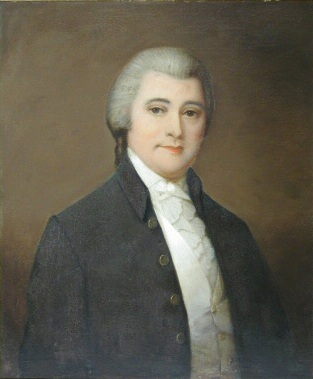
William Blount was an American politician, landowner and Founding Father who was one of the signers of the Constitution of the United States. He was a member of the North Carolina delegation at the Constitutional Convention of 1787 and led the efforts for North Carolina to ratify the Constitution in 1789 at the Fayetteville Convention. He then served as the only governor of the Southwest Territory and played a leading role in helping the territory gain admission to the union as the state of Tennessee. He was selected as one of Tennessee's initial United States Senators in 1796, serving until he was expelled for treason in 1797.
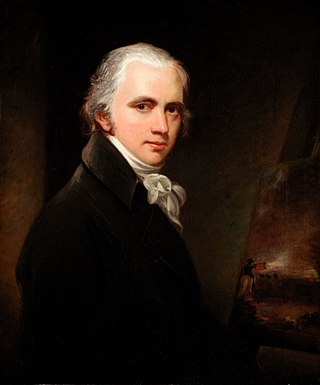
William Beechey was a British portraitist during the golden age of British painting.
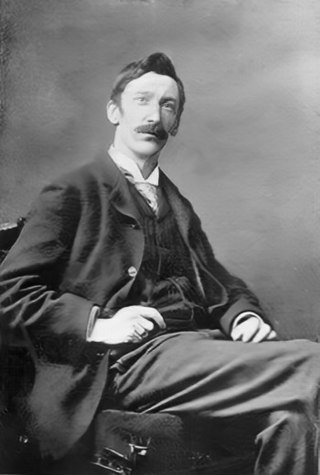
Stanhope Alexander Forbes was an Irish artist and a founding member of the influential Newlyn school of painters. He was often called 'the father of the Newlyn School'.

Conrad Baker was an American attorney, military officer, and politician who served as state representative, 15th lieutenant governor, and the 15th governor of the U.S. state of Indiana from 1867 to 1873. Baker had served in the Union Army during the American Civil War, rising to the rank of colonel, but resigned following his election as lieutenant governor, during which time he played an important role in overseeing the formation and training of states levies. He served as acting-governor for five months during the illness of Governor Oliver Morton, and was elevated to Governor following Morton's resignation from office. During Baker's full term as governor, he focused primitively on the creation and improvement of institutions to help veterans and their families that had been disaffected by the war. He also championed the post-war federal constitutional amendments, and was able to successfully advocate their acceptance.
Sir William Charles Ross was an English portrait and portrait miniature painter of Scottish descent; early in his career, he was known for historical paintings. He became a member of the Royal Academy in 1842.
Sister Mary Stanisia, SSND, was an American Catholic nun, artist, and painter, member of the School Sisters of Notre Dame.
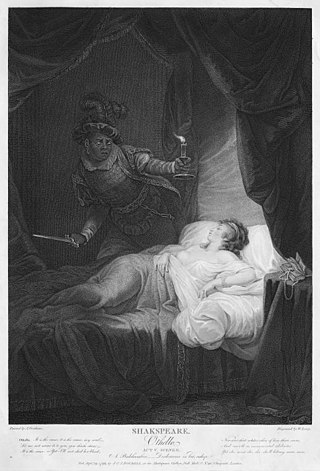
John Graham was an 18th-century Scottish painter and teacher of art.

George Duncan Beechey was an English portrait painter.

Henry Singleton was an English painter and miniaturist.
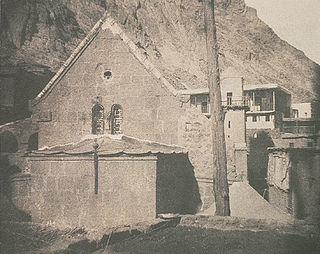
Col. Leavitt Hunt was a Harvard-educated attorney and photography pioneer who was one of the first people to photograph the Middle East. He and a companion, Nathan Flint Baker, traveled to Egypt, the Holy Land, Lebanon, Turkey and Greece on a Grand Tour in 1851–52, making one of the earliest photographic records of the Arab and ancient worlds, including the Great Sphinx and the Great Pyramid of Giza, views along the Nile River, the ruins at Petra and the Parthenon in Greece.

Daniel Orme was an English artist, publisher, and official Historical Engraver to George III and the Prince of Wales, the future George IV.

Walter William Ouless was a British portrait painter from Jersey. He became an Associate of the Royal Academy (ARA) in 1877 and a full member (RA) in 1881.

Thomas Brigstocke was a Welsh portrait painter. He studied art in London, and then spent eight years in Italy before returning to England. In the 1840s he visited Egypt, where he painted portraits of Mohammed Ali Pasha and his family.
William Thomas Roden was a nineteenth-century English artist.

Scottish art in the eighteenth century is the body of visual art made in Scotland, by Scots, or about Scottish subjects, in the eighteenth century. This period saw development of professionalisation, with art academies were established in Edinburgh and Glasgow. Art was increasingly influenced by Neoclassicism, the Enlightenment and towards the end of the century by Romanticism, with Italy becoming a major centre of Scottish art.

James Fillans was a Scottish sculptor, poet and artist with a short but influential career in the early 19th century.

William John Thomson was an American-born painter of silhouettes, portraits and miniatures who was active in Great Britain.